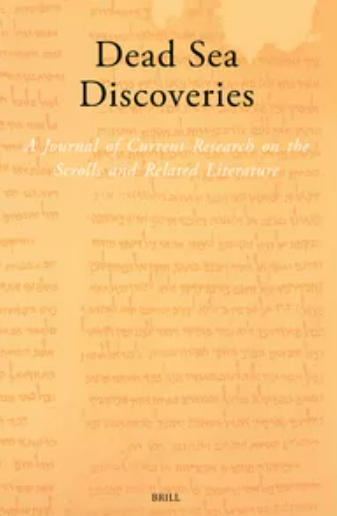https://doi.org/10.1163/15685179-bja10064
1QM(전쟁 두루마리)의 3-9열은 군사 조직과 전술을 다루는 것처럼 보인다. 그러나 이 부분들의 주된 초점은 전쟁을 넘어 나팔, 깃발, 그리고 그 위에 새겨진 의례적 명문들과 같은 의례적(ceremonial) 요소들로 확장된다. 심지어 무기류조차도 박물관 전시에서나 볼 수 있을 법한 미학적이고 비기능적인 세부 사항에 세심한 주의를 기울여 묘사된다. 이 부분에 대한 문학-수사학적 분석은 독자에게 전쟁이 신성하고 의례적인 사건이라는 인식을 불러일으키도록 만들어진 의례적 측면들을 지적한다. 이는 반복되는 모티프, 특정 명령 목록으로의 범주화, 소통 및 상호작용 방식, 신성한 전쟁 상징, 그리고 하나님과의 상호작용을 통해 달성된다. 의례 이론(Ritual theory)은 텍스트의 의례적 표지들을 증명하는 데 사용되며, 저자들이 전쟁을 이러한 의례적 방식으로 묘사한 목적을 밝혀준다. '전쟁 두루마리'의 이 부분은 실용적인 군사 계획 이상이며, 오히려 군대가 영적 토대 위에 서 있는 종말론적 전쟁의 의례적 재현(ritual representation)이다.
Cols. 3–9 of 1QM appear to address military organization and tactics. However, the predominant focus in these sections extends beyond warfare to ceremonial elements such as trumpets, banners and the ritual inscriptions on them. Even the weaponry is described with meticulous attention to aesthetic and nonfunctional details, as one might find in a museum exhibition. A literary-rhetorical analysis of these columns points to ritual aspects crafted to evoke in the reader a perception of the war as a sacred, ritualistic event. This is achieved through repeated motifs, categorization into lists of specific orders, modes of communication and interactions, sacred war symbols and interactions with God. Ritual theory is used to demonstrate the ritualistic markers of the text, shedding light on the authors’ aims in portraying the war in this ritualistic manner. This part of the War Scroll is more than a practical military plan, and is rather a ritual representation of the eschatological war, in which the army stands on spiritual foundations.






